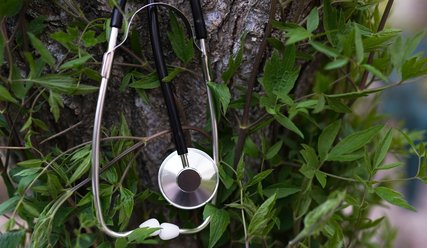Telehealth around the motu | Gore
The College has updated its 2017 telehealth position statement, Specialist GP telehealth consultations.
The revised statement reflects the College’s view on how telehealth could be used to supplement in-person consultations, while also acknowledging that decisions about how telehealth consultations can be integrated into a practice need to be made by the specialist GPs and their teams who understand the local context and what will work best for patients and their health outcomes.
We asked some members to share their experiences about how they use telehealth in their practices, as well as the benefits and the challenges that telehealth has created for them, their patients, and their communities. Dunedin-based GP Dr Peter Gent has also shared his perspectives on telehealth.
Dr Andrew Ure
Andrew is a GP and a practice owner/director working in Gore. He is also a GPEP1 teacher.
His rural practice serves a population of 12,500, and 8,000 are enrolled at his practice.
Andrew says, “The majority of our patients are from the wider farming community, and a significant number of our high-needs patients are retirees, Māori, along with a small number of Pasifika. Many of our patients work at the local meat processing factories, dairy farms/factories and other primary industry localities.
“The issues or conditions we see a lot of include oral health, bowel cancer, mental health, diabetes, inflammatory auto-immune diseases, and age-related pathologies.
There is a second general practice in the town and other smaller or sole-charge GP practices scattered around the community.
Prior to the Level 4 lockdown in 2020, the practice was using telehealth – triaging patients via phone along with some phone consultations, which made the transition easier for the team. Andrew says, “The team managed fairly well as we already had the infrastructure in place for remote access to our notes and the capacity to provide ‘voice over internet’ phone services from anywhere.”
Throughout the lockdown the practice continued with phone consultations and added video consultations and engaged with patients via email in the ‘Manage my health’ portal. Staff worked in teams (bubbles) and did more shifts from home where they logged in remotely.
“Our patients appreciated that they were still being seen if they needed to but there was a significant drop in demand for anything that wasn’t urgent. We found more repeat medication was prescribed without in-person reviews which meant that screening and wider health issues management was sometimes delayed.”
Andrew’s practice continues to provide telehealth options to their patients via the patient portal, text notifications around scripts, and phone and video consultations (although the latter has limited uptake).
“We were fortunate to have already upgraded the practice’s internet and phone systems prior to the pandemic,” says Andrew. “Other changes we had to make included changing from desktop computers to laptops to allow staff to work remotely and do video consultations – and this required us to purchase other necessary items such as microphone headsets, spare laptops that could be taken home, additional cellphones and SIM cards for those working at home who did not have unlimited Wi-Fi. For the staff working at home, we also paid a part of their utility costs.”
When thinking about how telehealth has changed the shape of his team’s workload, Andrew says there are positives and negatives.
“The positives have to be less time spent on appointments that are just to follow-up results, and the savings in travel times and costs and the convenience for patients who opt for a telehealth appointment. By having less people in the waiting room there is also the reduced illness transfer too, which was important especially over winter.
“Another positive is that we don’t have people waiting hours to be seen if they are walk-ins with an acute issue. It also means we don’t have stressed staff who are trying to deal with multiple things at the same time in a limited space.
“Negative impacts on our workloads that we have seen include our medical staff being much more “available” to receive messages and requests at all hours. This has been stressful and is an important reminder for there to be clear expectations and boundaries, and fee structures in place around virtual care modalities like patient portals.
“We have found there is some double handling of patients where perhaps a telehealth consultation is carried out, but then a face-to-face consultation must be booked to go over the same information due to the issue not being satisfactorily addressed in either the patients or the clinician’s view.
“I think there has also been a drop in our continuity of care, as the triage can be carried out by any member of the team so while the patient is seen or treated in a timely fashion, it might be at the expense of not seeing their own GP who may not be working that particular day while another GP may have some acute appointments available."
When thinking about telehealth as a whole, and not just in relation to workloads, Andrew says, “There is the cost savings for the practice and the patients, and the ability for the finite space to be used more productively for ‘in-person’ things and ‘off-site or remote’ space to be used for virtual things.
“In this role there does tend to be a dependence on knowing the history of the patient, understanding the best way to communicate with the patient, and looking out for non-verbal cues. This can at times be challenging during a phone or video consultation and also if the patient is not someone you have regularly seen.
“Technology-wise, learning how to use new systems does take time and there can often be challenges with video, poor reception, difficulty managing video setting, calls dropping out etc. There is a learning curve at the beginning while everyone gets comfortable and confident using the systems.”
Despite this, Andrew absolutely thinks telehealth has a place in the future of the workforce. “But it is wrong to think that telehealth can offer the same service as in-person care. It has different strengths and weaknesses.
“I believe telehealth works best where there is an existing relationship of trust between the clinician and the patient, and I think if this relationship isn’t there it is when we start to see virtual treatment failures occur.”
Read more in Andrew’s study published in the JPHC in March 2022, “Investigating the effectiveness of virtual treatment via telephone triage in New Zealand general practice.”
Related

11 September 2025 | College and members
GPs want patients to be seen, heard and known

21 May 2025 | College and members
Budget 2025 opinion: We don't need to create a new health service, we need to invest in the current one

26 March 2025 | College and members